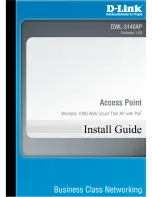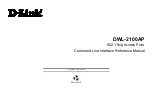
Page 14 of 130
Inductance
The generation of a magnetic field, in a conductor, due to the fact that an electrical current is flowing
along it. Inductance raises the resistance of a conductor, thus increasing attenuation.
A given length of cable will have a certain amount of inductance, and this fact is taken into account
when circuits are created. This is the “specification” of the cable.
Short cable runs will have too much inductance and will be said to be “over loaded”, when compared
to the specification, and long cable runs can have to little inductance and are said to be “under
loaded”.
1.2.1 Type of Cables
Cable can range from 25 pairs to 2400 pairs.
Imagine to have 2400 subscribers on 1 cable.
If you miss count by 1, you would be on the wrong path to the subscriber.
Understand and know your color code, it is the basic language to counting the pairs.
CABLE NAME
CABLE TYPE
RANGE OF SIZES
CELFIL
Grease filled
Fully color coded, binder groups and pairs
6 - 2400 Pair
ALPETH (ALP)
Air Core
Fully color coded, binder groups and pairs
6 - 2400 Pair
CELSEAL (CEL)
Grease filled
Fully color coded, binder groups and pairs
6 - 2400 Pair
1.2.2 Color Codes
A standard color code system enables you to identify specific cable pairs. Each numbered pair in a 25-pair
binder group always has the same colored wires. Ten colors are used: 5 for the tip and 5 for the ring. We
typically call the pairs by TIP-RING like a red-green pair. But binder colors we call by RING-TIP colors like
ORANGE – BLACK. This way we know if someone is referring to the pair or binder.
Tip and ring
The terms “tip” and “ring” come from an earlier time when telephone operators connected calls using phone
plugs. The tip is connected to ground, while the ring is connected to −48 to –52 volts. Tip is positive and ring
is negative. Although the technology has evolved since then, “tip” is still used to denote the positive
grounded wire of a twisted pair and “ring” still refers to the negative wire connected to –48 to –52 volts.















































